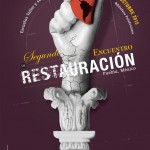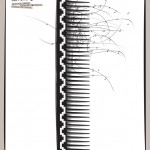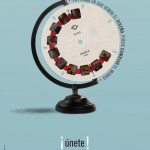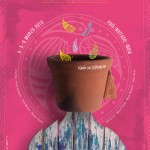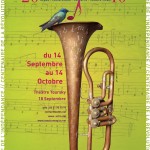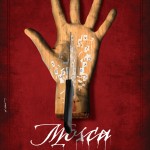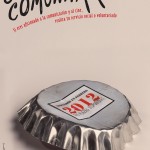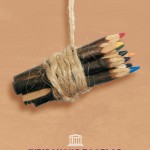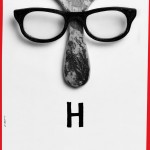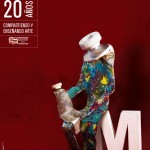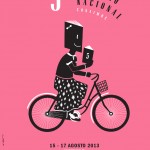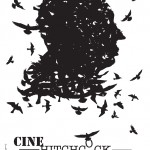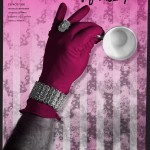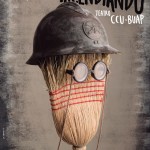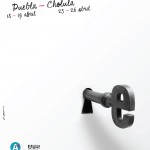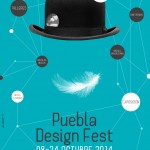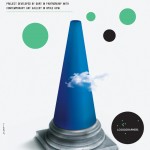Mexico is famous for being a poster country and we are proud to introduce our new Poster Master, the prolific Benito Cabañas who is recognised as being one of the most important designers in Latin America. His style is hard to define because everyone of his masterful posters is completely different and that is something to be admired in a modern poster designer. Benito combines strong contrasting colours with powerful photography and illustration to create striking imagery that captures the eyes. He is the Head of Studio for Graphic Design and Communication at Abracadabra and founder of the creative space Sector 11. He worked for the design agency Anatome and as a graphic consultant for UNESCO in Paris.
He has received many awards, including the Quorum award and the “Coup de Cœur” in France and has been selected for many prestigious international exhibitions like the International Triennial of the Political Poster in Mons, the First International Poster Contest “Anti-AIDS in Ukraine, In Quanto Project and Good 50×70 among others.
He has taught workshops and conferences in more than 25 cities in Mexico as well as in France, Argentina, Rumania, Chile, Costa Rica, Spain, Bolivia and Ecuador. His work has been published in several design books and is part of the collection of the Royal Lazienki Museum in Varsovia, the Contemporary Art Museum Ateneo de Yucatán in Mexico and the Museum of Contemporary Art and Design in Costa Rica.
We asked Benito our “Poster Poster Questions” and this is what he had to say:
1. What does the poster mean to you and why do you design posters?
The role of the poster today, escence or importance that it has regarding the field of communication is that I think it’s turning more into a medium geared toward the galleries. Few times we find posters designed by designers. We find images that keep bombarding the cities, especially with the use of new technologies, we can say that it starts to loose that characteristic and quality that the poster has. I think that to be able to revitalize it throught the use of forums, disciplines, government councils, and especially to revitalize the poster to be used in the streets is to give value again to the communication it can have.
The posters, as I’ve said before, seems to be only in an antique cabinet because it’s not a medium that we use anymore as a communication device. It is still a way to express ideas and emotions but it is staying in a different value that is the change that it wants or that maybe it doesn’t want: to be used only for galleries and focused on the people who can visit it.
2. What would you say makes a good poster?
To design a good poster the basic and fundamental part is that it has synthesis. Because in one image you have to say so much with such few elements. It is the perfect coexistence of image and typography united in theis medium called poster. And there can be posters of all sorts and kinds, but it’s always important that they conserve these qualities, of being an image that impacts you in a few seconds and that, I reiterate, will be given by the synthesis.
3. What do you think is the role of the poster on the world today?
The role that the poster is playing in the world today is that it’s loosing it’s essence as one more entity or citizen that also lives in the street and has a point of view and expresses what it feels in a few seconds. Instead it’s turning into a format exclusive for galleries and also for a few chosen ones. It is still a powerful device to express messages and ideas and to give and opinion, but it is no longer the medium that we used to interact with on a daily basis.
4. What is your typical design process for making a poster?
The process that I follow to make a poster is not very far from any process that is followed in any of the tools or design arguments. I start from research. Since I first know what the project will be about I try to research everything about it: context, situation, representations, history of the group –in the case of theatre groups- or if it’s a movie then the history of the director, or the movie, or similar movies that have been done. After that comes the analysis of the information, many interviews and close interaction with the client, and from there I enter what you may call the creative stage, in which –based on all the information gathered – I begin to create concepts and sketch, and once I find the path or paths to explore then it comes this fun part that every designer loves where we enjoy to create ideas, try out colors, shapes, images, typography, and all this mixture and richness that allows for the final product, the poster, to be an integral product that is not only dependent on this part of the process of inspiration, which is what many people think, or of a specific technique or program. To design a poster entails a whole process that is vast and often complex depending on the kind of design you do, but that in the end results in a synthesis of all the information you have.
5. If you could chose a poster in history as your favourite, which one would it be and why?
Since I was studying, the poster that really impacted me and that I loved was one designed by Cassandre, a sequence of images about the drink named Dubonnet. It’s a series that I really love because of its simplicity and the friendly face of the character that is toasting to the health of the person that is imaginarily keeping him company.
6. What advice would you give to new designers who might want to become poster designers?
My advice for the yougn people who are studying design and want to focus on poster design is to understand the process, the development, the design, and to learn about the synthesis and the power that the message has within this synthesis. To imagine that it is like the old professor who teaches them basic principles of design, of poster design in this case, and to embrace it with this feeling of wisdom. And specially that they can be propositional, with the knowledge and hablities that they have in order to make a new generation of what may be called “the new poster”.

